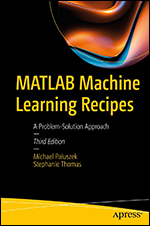Essentials of the Finite Element Method: For Mechanical and Structural Engineers
- 2h 48m
- Dimitrios G. Pavlou
- Elsevier Science and Technology Books, Inc.
- 2015
Fundamental coverage, analytic mathematics, and up-to-date software applications are hard to find in a single text on the finite element method (FEM). Dimitrios Pavlou’s Essentials of the Finite Element Method: For Structural and Mechanical Engineers makes the search easier by providing a comprehensive but concise text for those new to FEM, or just in need of a refresher on the essentials.
Essentials of the Finite Element Method explains the basics of FEM, then relates these basics to a number of practical engineering applications. Specific topics covered include linear spring elements, bar elements, trusses, beams and frames, heat transfer, and structural dynamics. Throughout the text, readers are shown step-by-step detailed analyses for finite element equations development. The text also demonstrates how FEM is programmed, with examples in MATLAB, CALFEM, and ANSYS allowing readers to learn how to develop their own computer code.
Suitable for everyone from first-time BSc/MSc students to practicing mechanical/structural engineers, Essentials of the Finite Element Method presents a complete reference text for the modern engineer.
- Provides complete and unified coverage of the fundamentals of finite element analysis
- Covers stiffness matrices for widely used elements in mechanical and civil engineering practice
- Offers detailed and integrated solutions of engineering examples and computer algorithms in ANSYS, CALFEM, and MATLAB
About the Author
Dimitrios Pavlou is a Professor in the Department of Mechanical and Structural Engineering and Materials Science at the University of Stavanger in Norway. In 2014 he was elected a full member of the Norwegian Academy of Technological Sciences. He has had twenty years of teaching and research experience in the fields of finite elements, boundary elements, mechanics of solids, and fracture mechanics. Prof. Pavlou has published many research publications and authored/edited five books and conference proceedings. He is a reviewer in more than 18 international journals and has participated as a plenary speaker and session chair in many international conferences. Today he is a Research Group Leader (Faggruppeleder) of the Mechanical Engineering and Materials Science Group
In this Book
-
An Overview of the Finite Element Method
-
Mathematical Background
-
Linear Spring Elements
-
Bar Elements and Hydraulic Networks
-
Trusses
-
Beams
-
Frames
-
The Principle of Minimum Potential Energy for One-Dimensional Elements
-
From “Isotropic” to “Orthotropic” Plane Elements—Elasticity Equations for Two-Dimensional Solids
-
The Principle of Minimum Potential Energy for Two-Dimensional and Three-Dimensional Elements
-
Structural Dynamics
-
Heat Transfer




